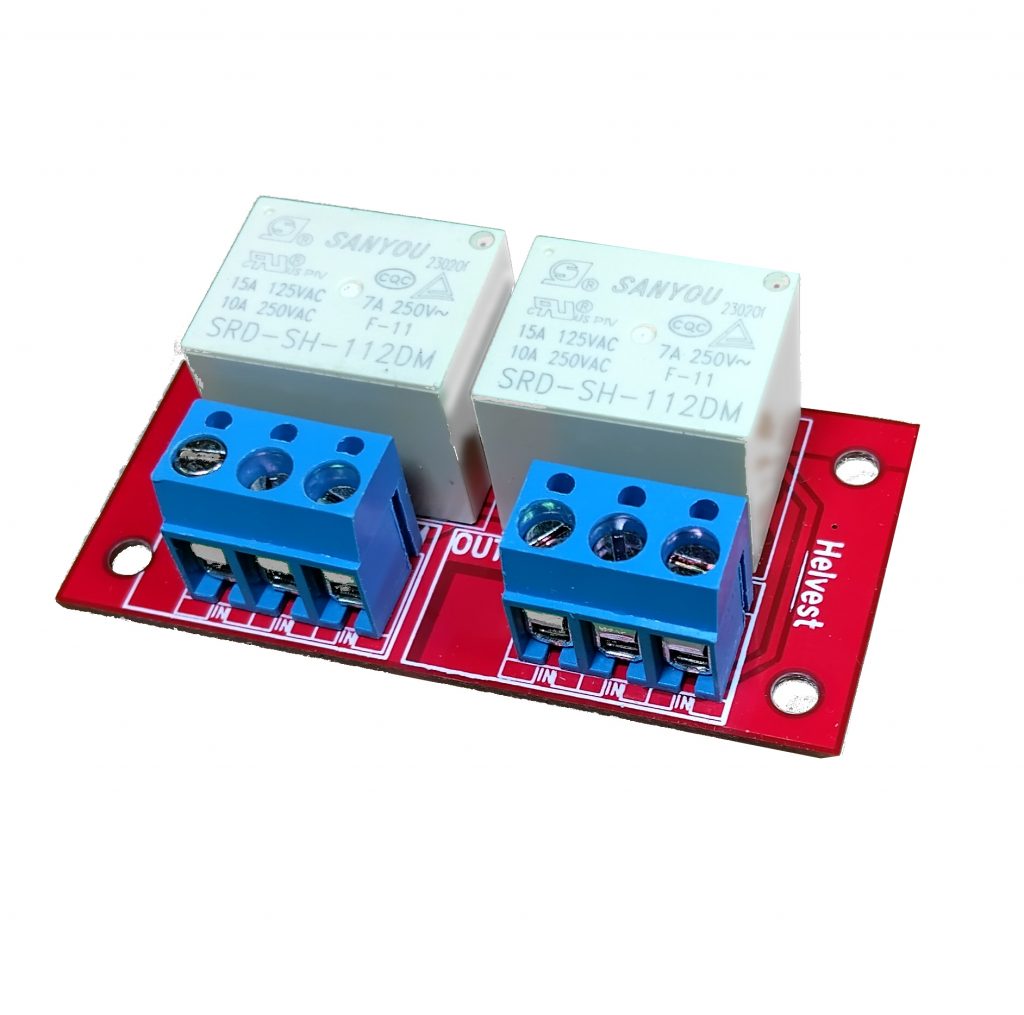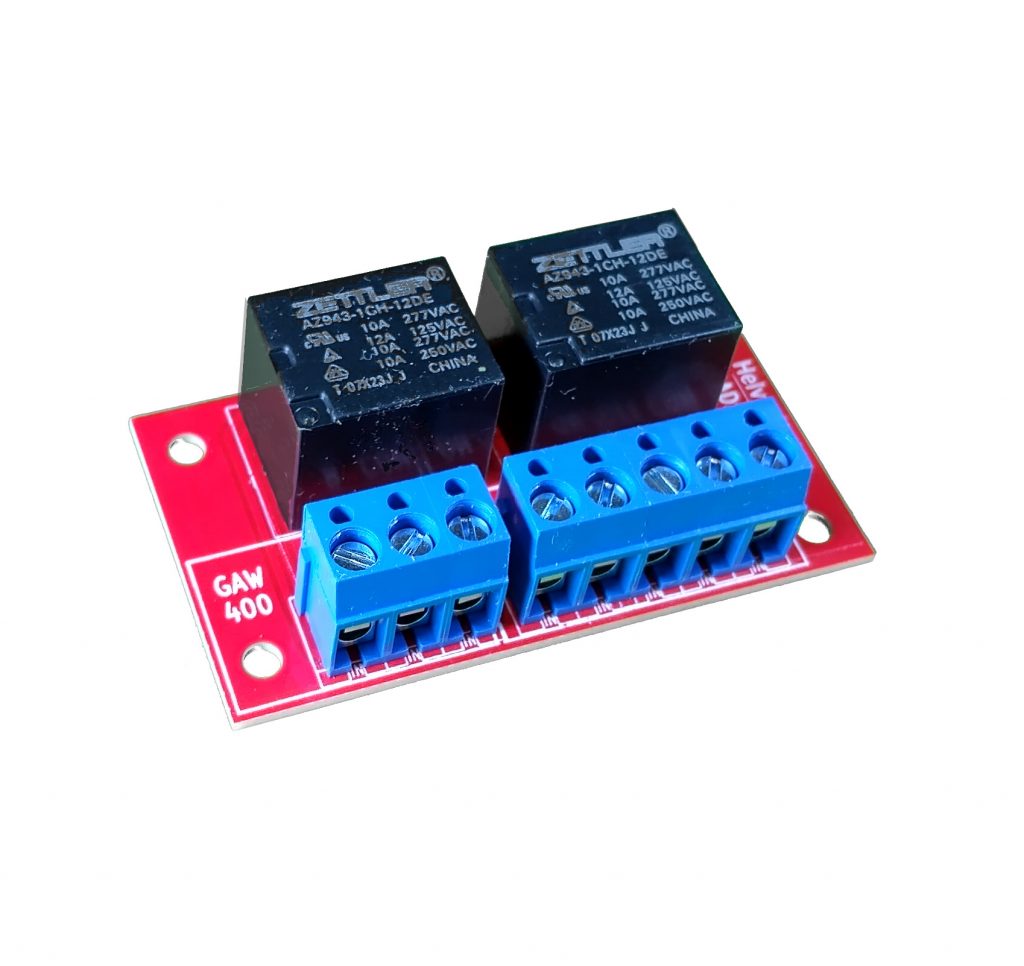What Relays Are For
Relays are switches that turn a circuit on or off. They work similarly to the switches you use to turn on the lights at home, call an elevator, ring a doorbell, or activate your car’s windshield wipers. For these tasks, you operate a button or a small lever with your hand. Relays, on the other hand, switch circuits on or off using electrical current: the button or lever is replaced by the flow (or interruption) of a current.

At first, this might sound unnecessarily complicated or even strange—using one current to control another. But without diving too deeply into technical details, this is actually a widely used trick. With the current controlling the relay, you can activate a different current, possibly with a different voltage (in Volts) or intensity (in Amperes).
In digital model railroading, relays can be particularly useful. A decoder often provides a signal to directly activate turnouts, signals, or similar components. In some cases, however, this signal can be used to control devices that the decoder alone cannot operate, because they require different parameters than the decoder can provide.
What Monostable and Bistable Mean
Let’s return to our earlier examples. There are two fundamental types of switches! When you turn on a light, windshield wipers, or a TV, the switch stays in the “on” position until you take another action to turn it off.
This configuration, in a switch or a relay, is known as bistable.

Other switches, such as a doorbell, a car horn, or the button for spraying washer fluid, remain active only while you are pressing the button or moving the lever. As soon as you release it, they stop.
This configuration, where there is a “normal” position and one that is held only during activation, is known as monostable.
In a model railway layout, both configurations can be useful. For example, you might need a monostable relay to send a pulse to activate a coupler, or a bistable one to power a specific track section.
Another important difference between these configurations is this: monostable relays are “memory-less.” This means that when you power on your layout, they are always in the normal position. Bistable relays, on the other hand, remain in their last position. For instance, if you turn off the main switch at home and forget to turn off some lights, when you switch the power back on, those lights will still be on.
What SPST and SPDT Mean
This distinction refers to how the contacts are configured.
In SPST (Single Pole Single Throw) relays and switches, the current is either allowed to flow or interrupted, in the classic ON-OFF system. One position of the switch lets current pass, while the other stops it. This applies to most of the examples mentioned earlier: lights, doorbells, car horns—devices that are either “on” or “off,” whether temporarily or not.
SPDT (Single Pole Double Throw) relays, on the other hand, have a less common configuration. Here, the current always flows but is diverted between two different devices. A simple example from the railway world would be a signal light with two bulbs, red and green. The signal is never completely off; instead, the current is switched from one bulb to the other.

The symbols of the two configurations
Helvest relays
Aware of how useful these components can be, we are introducing relay modules compatible with our decoders. Specifically:
- GAR10: A pair of 12V monostable SPST relays. These are compatible with the GAW400 module or any other decoder that provides a 12V signal.

- GAD10: A pair of 12V monostable SPDT relays. These are also compatible with the GAW400 module or any other decoder that provides a 12V signal.

These two models will be available at the end of the month. Additional configurations will follow.
Examples of Applications in Model Railroading
These relays can be used to power motors, devices, or even older electromagnetic turnouts that modern decoders cannot handle.
We will soon publish articles with detailed examples of how to use them. Follow us on social media or subscribe to our newsletter to stay up to date!